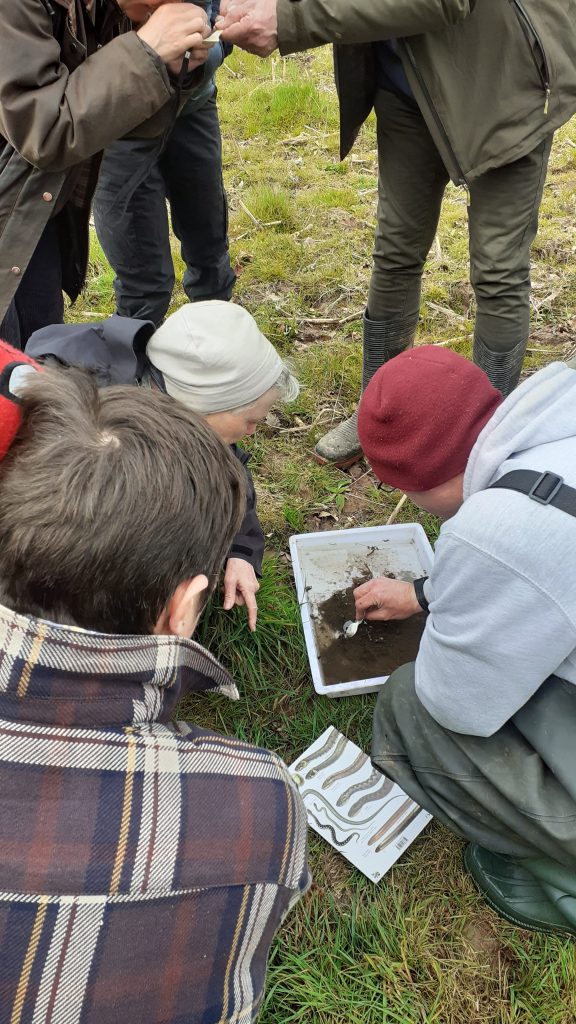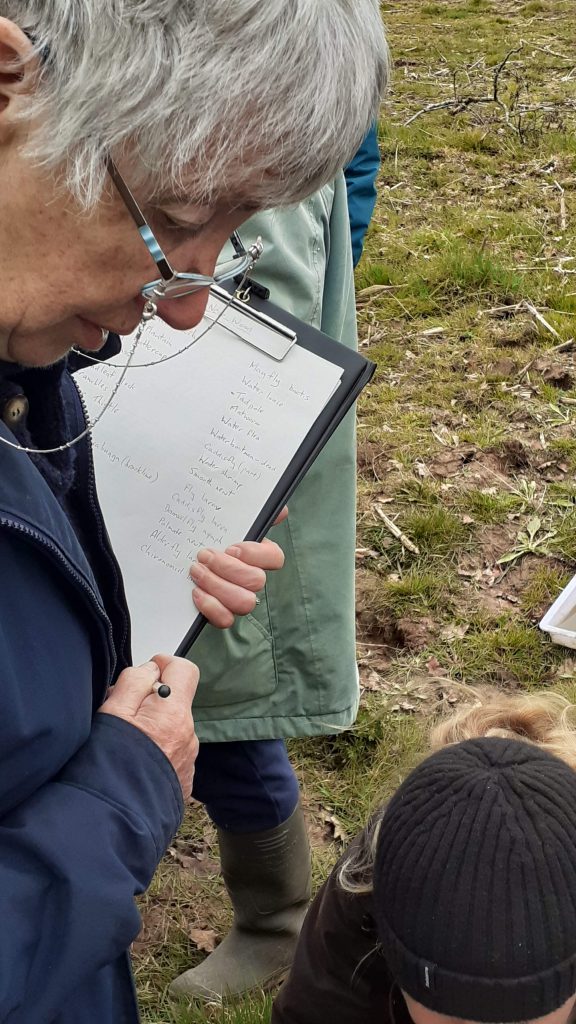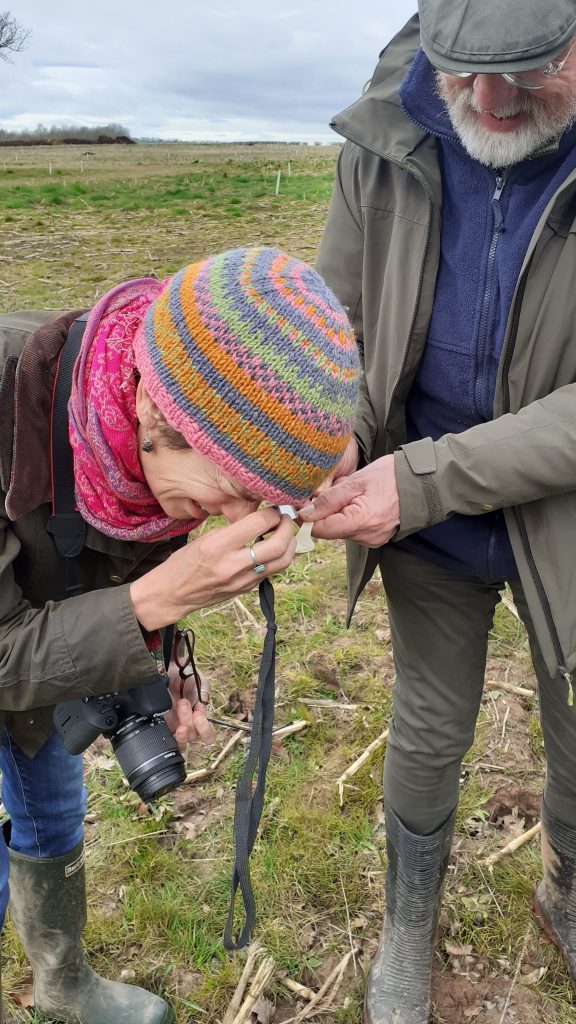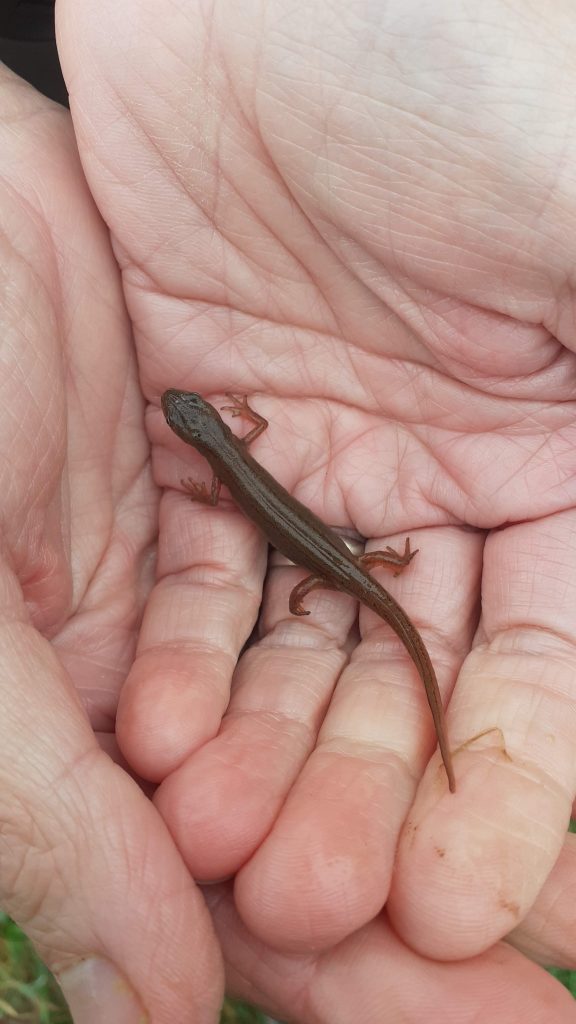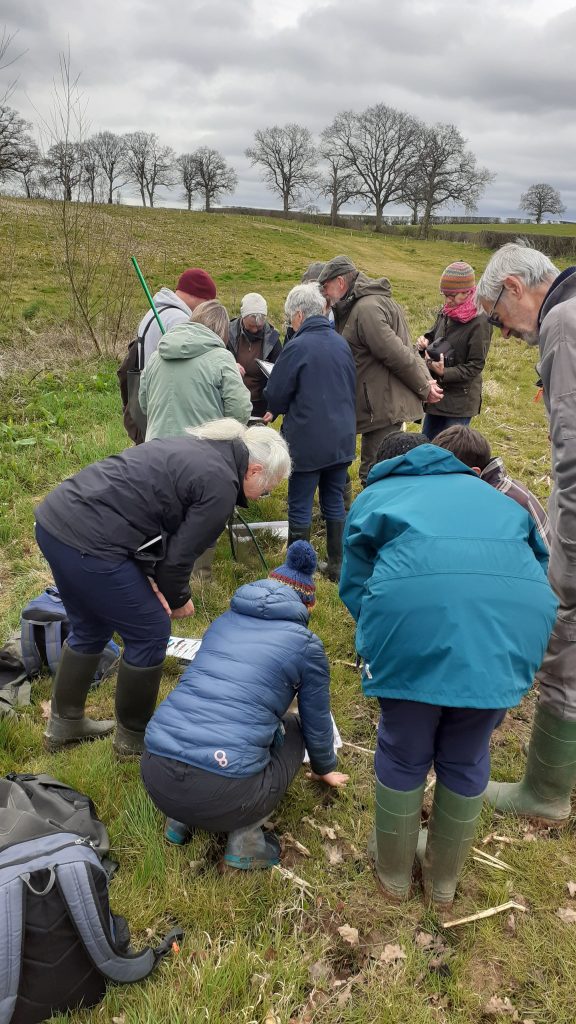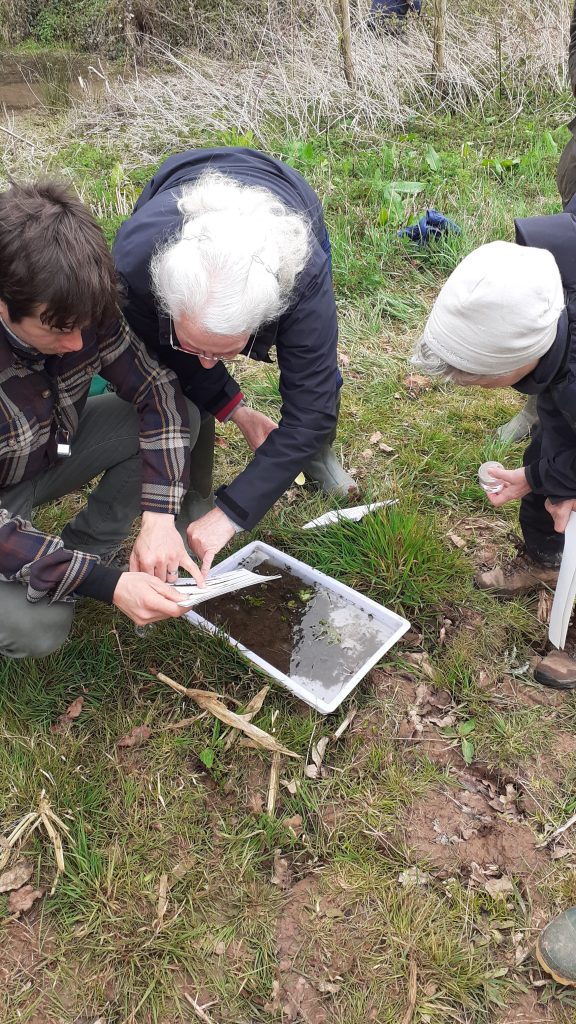The current climate emergency and COP26 have highlighted the biodiversity crisis that we’re presently experiencing, and those ways in which we have put the future at stake for our immediate descendants.
Hellens has started to implement plans to make a small but genuine commitment to the regeneration of the land in its care.
In Autumn 2021 we began a series of consultations with local conservationists, land management, wild-life and National Trust experts.
With their assistance we developed a blueprint for regeneration, to be achieved working in conjunction with the local community.
Adam Munthe
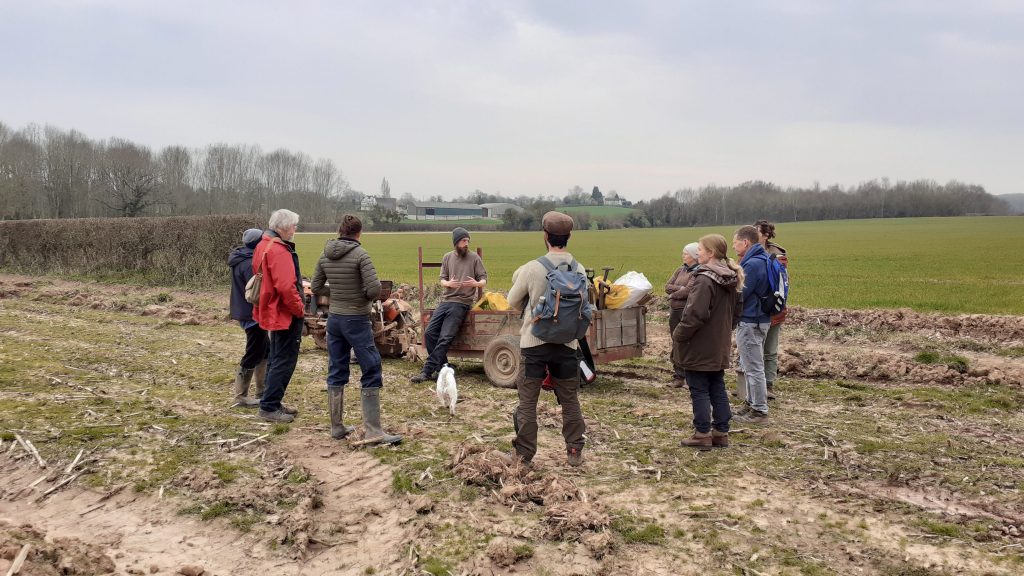
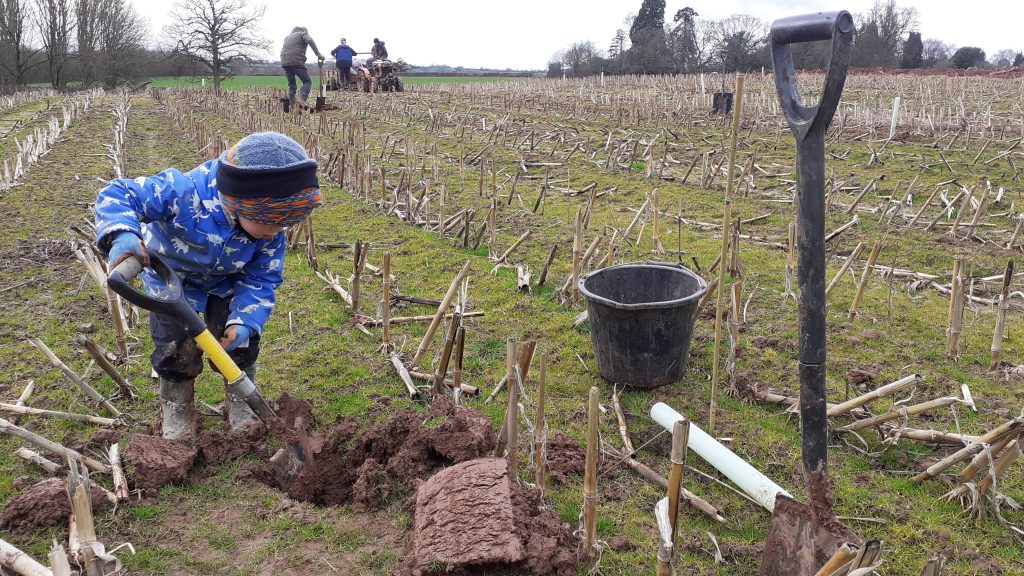
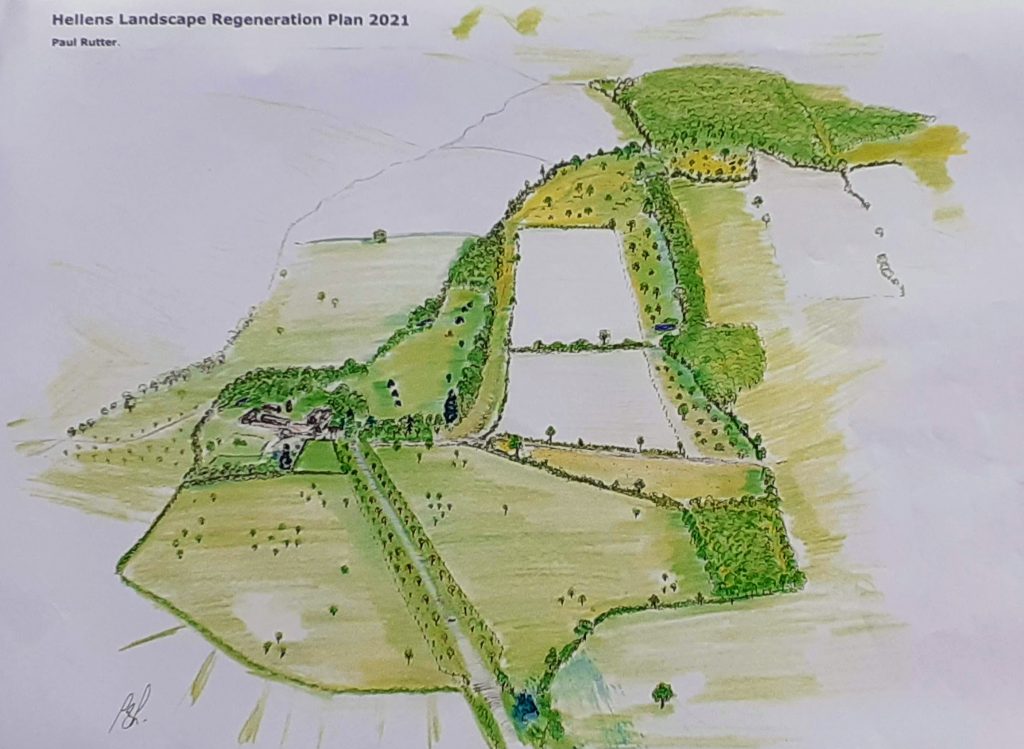
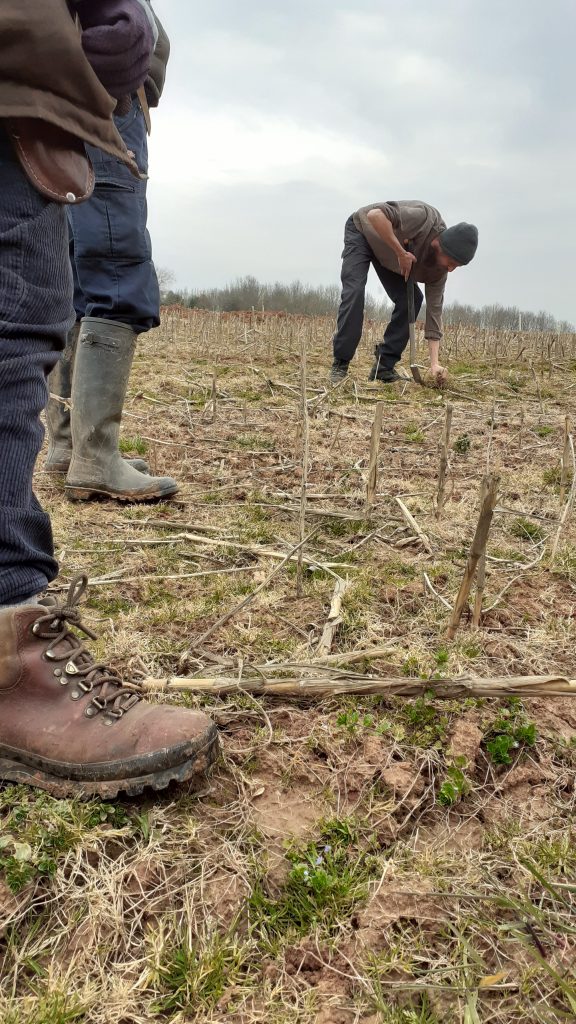
Background
Over the last century Herefordshire, like so much of the UK, has become increasingly modified by modern farm practices with the consequential loss of trees and hedgerows including ancient trees and other vital components that provide habitat to a broad diversity of fungi, plants insects, birds and native wild animals.
The Hellens estate, as many already know and appreciate, includes orchards with ancient trees, lush meadow-land, ponds and the SSSI Hallwood, with the remaining land farmed for arable crops.
The restoration of natural processes will steadily restore health and diversity to the area, while recapturing carbon in the soil and in the growth of new plants.
Hedges will be allowed to grow higher between cuts, providing a harvest of berries and nectar for the birds and bees, and some trees within them will be left to grow up to form mature trees for the future.
We intend to dig or redig ponds that will encourage a broader range of wildlife, clean up our polluted watercourses and, all in a carefully managed process, restore the land’s natural capacity to provide us with its fruits and benefits.
Already since October things have started to change; grasses and herbs have germinated, and even some oak saplings, self-sown from the trees at the edge of Hallwood! The benefits are already being felt in terms of soil protection and water quality. It will be a few years before we are able to wander through a habitat-rich mix of woodland, pasture, and orchard, but the crucial element is simply that we’ve started!
Update Report October 2022
An incredibly dry Spring and record heat in the Summer has slowed down growth in some areas, but has not been enough to halt the huge progress we have been making to restore, revive and improve the landscape of Hellens over the last months. 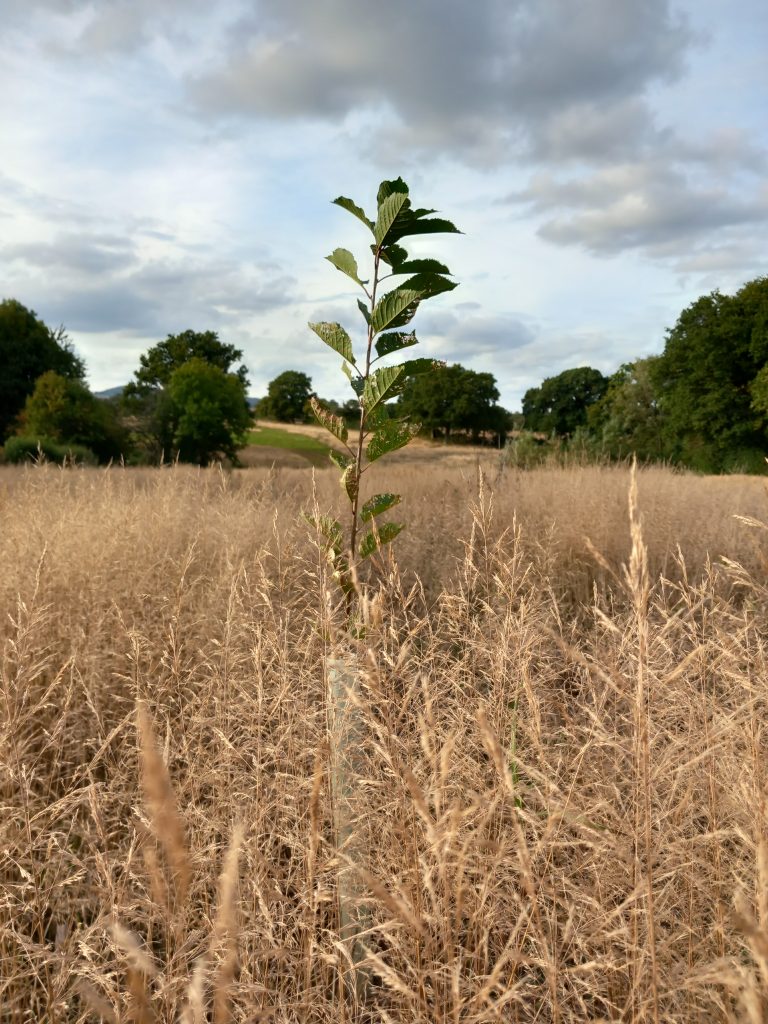
It seems incredible that it was less than a year ago (Oct 2021) that Adam sat down with a group of volunteers – experts in nature, re-wilding, water management and small-scale farming, to discuss how Hellens could address changing climate, carbon saturation, waterway pollution, lack of soil life, loss of insect species and the rapid decline of biodiversity. It was decided that the greatest impact we could have would be by using the land at Hellens to form an example to neighbouring farms and landowners, showing how food production and rural economics can be boosted by relaxing controls imposed on our native flora and fauna, allowing agricultural soils to recover, and providing habitat and food sources for insect and bird life. It was identified that the estate forms an important stepping stone between the AONBs (areas of outstanding natural beauty) of The Wye Valley and The Malvern Hills, and also part of a local patchwork linking Queens Wood at Dymock with the ‘Woolhope Dome’ and Haugh Woods to the North West. Changes and protections that we implement at Hellens have a much wider effect than simply within our own grounds.
The first step was to reduce the amount of land being intensively farmed. Repeated ploughing and use of chemicals had left the arable fields almost entirely void of life, and unable to hold carbon in the soil, whilst also polluting the stream with soil nutrients and chemical run-off from sprays. We have now almost halved the area of ground being farmed in this way, and have provided a large buffer zone along the course of the stream. The new layout of smaller fields surrounded by areas of natural regeneration have been demarcated by new hedge banks and ditches feeding seasonal ponds. These will be planted with mixed hedging species to give over a kilometre of new hedges. Hedge management has been altered across the whole estate to stop regular cutting, and so allow hedge trees to flower and fruit which is so vital for feeding insects and wildlife.
Last winter we planted 1000 new trees, which whilst still small, have largely survived the drought and are doing their job well as the forerunners to the natural regeneration of trees that we hope to see, particularly in the field next to Hallwood. This autumn we have worked and sown 5 acres of wildflower meadow in the field closest to Hellens, and are sourcing local provenance fruit trees to gradually re-establish orchard-pasture in this area; where used to be traditional orchards before the Second World War. Thinning continues in Hallwood, reallowing light to the woodland floor, and selecting carefully to enhance diversity of species and age of trees; suitable material is then taken out for the Biomass heat system, whilst also leaving plenty for the fungi and micro-fauna of the wood.
We have acquired some ancient-breed sheep for grazing, and are working more closely than ever with our tenant farmer, hopefully moving towards some more traditional breeds of cattle in the future!
Kieran Terry
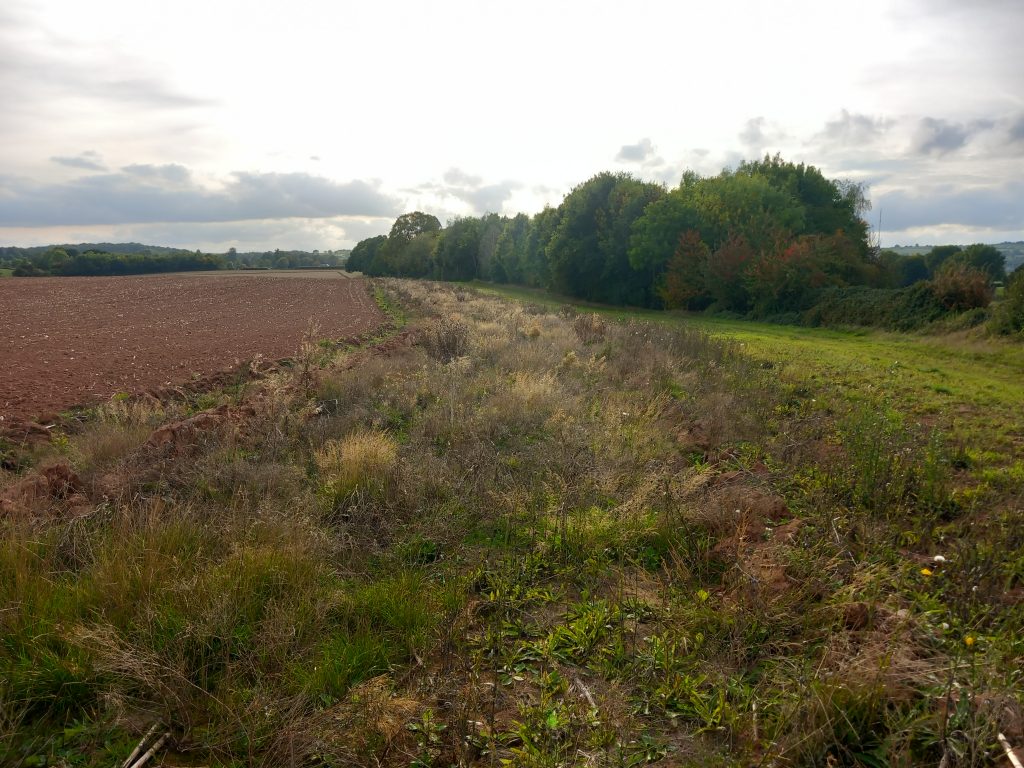
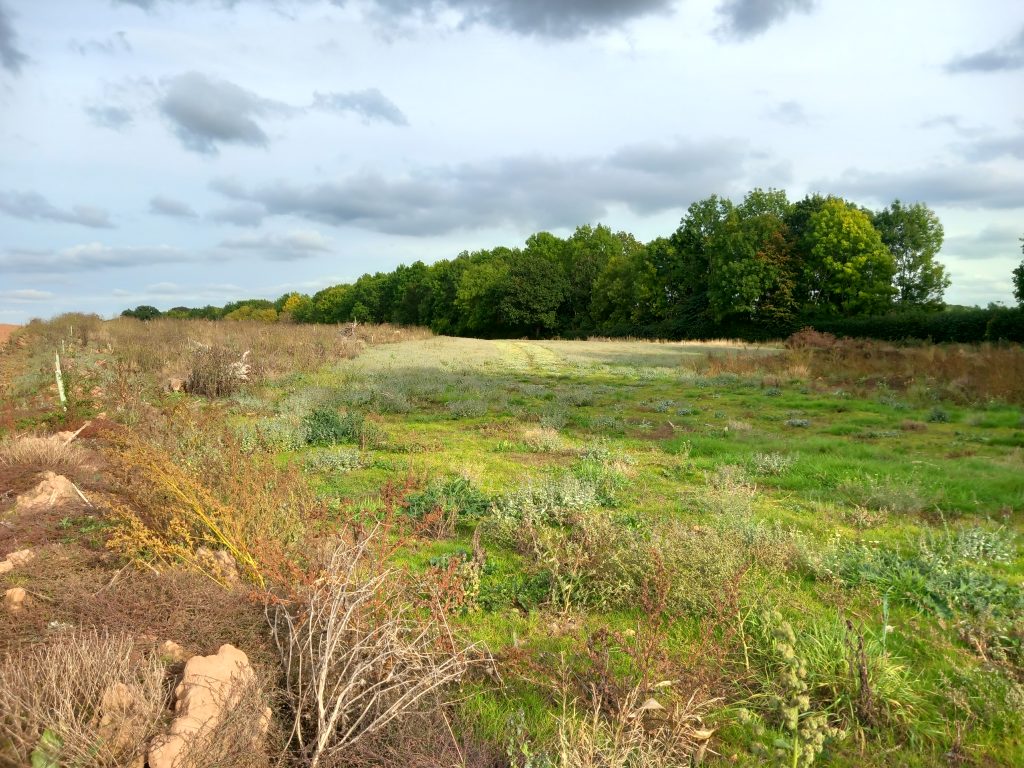
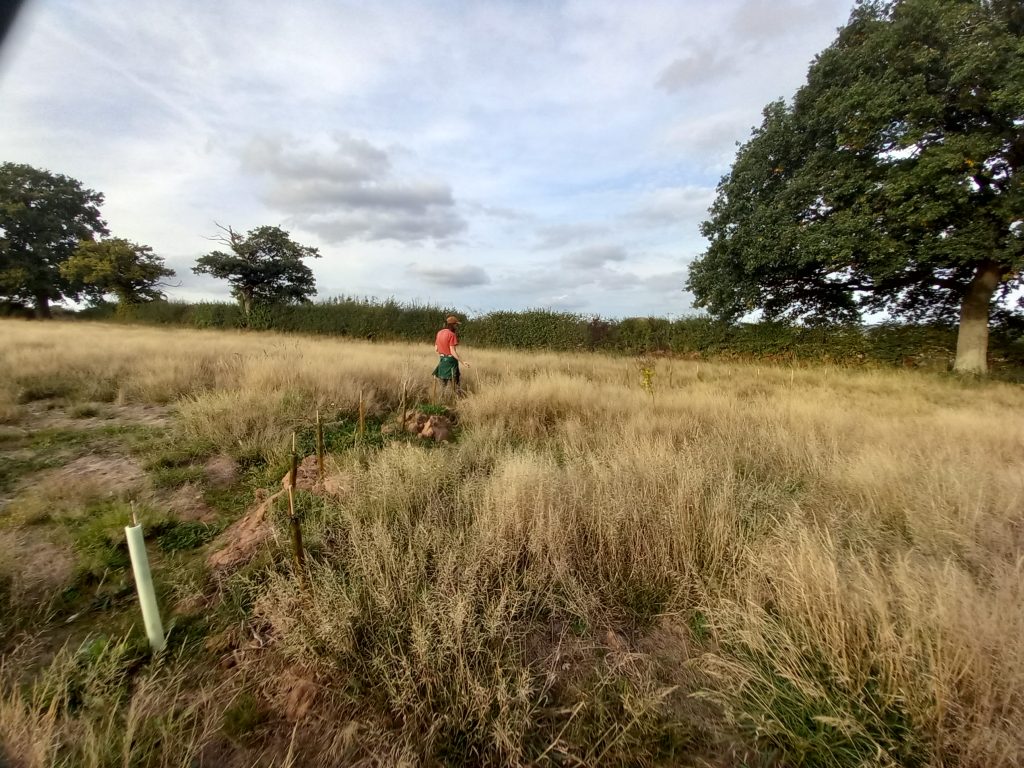
Update Report May 2022 – Paul Rutter
Good progress has been made over the last 6 months with the re-definition of the field margins and natural areas almost complete. Dry weather conditions limited the extent of tree and hedge planting over winter but more will be done next autumn. It was noted that the previously cultivated arable land has a good sward of grass species regenerating naturally. Remaining bare patches are colonized with scarlet pimpernel, pineapple weed, Mayweed, sow thistle, groundsell, wild pansy, wild geranium. Occasional wild mustard is growing and the base of field hedgerow margins are well populated with cleavers, nettles, coarse grasses with occasional dogs mercury, yellow archangel and stitchwort.
Hedges are coming into leaf showing the range of species present, including oak, field maple, sycamore, hawthorn, blackthorn, dogwood. These hedges have, until this spring, been regularly flailed (sides and top) so need to be given a few seasons to grow out before any selection of standard trees can be done. Few flowers were seen on hawthorn in the hedges due to flailing.
Hedge no1.…This runs north/ south and is adjacent to the pasture woodland across the front of the property. Occasional pedunculate oak standards can be introduced in autumn along the middle section of the hedge.
A bid had been submitted to restore the end section of adjacent arable land to wild flower /hay meadow in autumn and this could be extended north east along the south side of the arable land . It was suggested that a request to the tenant farmer could be made to restore the maize strip here to a smooth seed bed before he relinquishes this land at the end of the year, ready for grass seed/green hay to be spread. The square copse in the south west corner has a good number of young and potential ancient /veteran trees along its northern margin which are being crowded and shaded by other trees planted at the same time. The canopy needs to opened up to increase light reaching all sides of the oak and other retained trees, by feathering and haloeing trees around selected oaks in particular. This will be the first phase of work , leaving much of the felled timber in situ as waste (deadwood component), This work can include pollarding, coppicing and ring barking. Although ash is threatened with ADB there was no sign of the disease here, so it would be worth identifying suitable vigorous ash that could be haloed as sell as the oak.
Long term .In time the wire fencing could be removed from the north west side of the woodland to allow livestock to travel through (and graze) the woodland and pasture beyond, as and when thought appropriate.
The proposed track between the adjacent neighbouring farm buildings up to the Hellens farmland is to be established next autumn together with a new hedgerow. No 1a.
Hedge no:2 Some of the hedge has been left un cut and illustrates the type of hedge that is favourable along the whole southern boundary. Existing trees are both mature and post mature and include hawthorn and field maple. The strip of arable ground along the margin, as mentioned earlier, is to be restored to grassland followed by tree planting of fruit and nut species. The margin along the western edge will be kept clear of trees as access for vehicles and people. The new pond/ scrapes have retained some water in them over the winter. The spring weather has been exceptionally dry. It will take a couple of years at least for the ponds to consolidate and become aquatic habitats.
Hedge no 3. To be left uncut and grow out both sides then identify and mark potential standard trees this summer. If necessary plant standards in autumn, oak, field maple, cherry, wych elm?
Suggestion that a New hedge: No3a. to be a mixed planting with standards and then laid every 7 years? This will ensure light always reaches both hedge margins and soil can dry out.
Discussion about using a power harrow here to smooth out the rutted ground. It was agreed to discuss with contractor to see if the hard ground conditions would be suitable to achieve the surface required. Otherwise leave until softer ground conditions occur, later in the year. If done now this work will affect the current stage of grass growth that is becoming well established. New deadwood component has been introduced on the regeneration area inc.old pear. Discussion about the need for more large diameter tree trunks of native wood to be introduced to this area and towards Hall wood. To also cover some of the deadwood with cuttings and wood chip, to maintain moisture levels and encourage fungi to grow .
To ensure that part of the stems have contact with the soil to retain moisture and promote slow decay. Suggested including upstanding sections of oak stem are buried into the ground to stand vertically, to promote natural decay as would occur in a rooted, dying /dead tree. If any stem has root plate attached these will have added value. Felling in Hall wood in the autumn/ winter will address this shortage of large diameter oak and to locate large oak stems near to existing mature oak trees. The new trees, a mix of oak, cherry, hawthorn, crab apple were growing well in the guards .Important to monitor browsing by deer/ hare in the coming months. In particular if Fallow deer appear in large groups and spend time there, these are the biggest threat to the young trees.
The hedgerow no 4. and ditch along this section can be left to grow outwards having removed the farming activity that regularly flailed the hedge. The need to maintain the ditch to be clarified.
Hedgerow 5, ownership along the boundary of Hall wood field to be clarified but internal face should be left to grow out at least and to thicken. Natural regeneration is to be monitored along the edge of Hall wood . In autumn hawthorn bush transplants could be relocated from nearby woodland if no natural regen occurs as well as planting some oak standards.
The land adjacent to the spine hedge no 6 between Hall wood and Hellens is developing a rich sward with some potentially troublesome plants i.e. Sow thistle. It is hoped these will reduce as the grass sward thickens but some hand cutting before seeding, is recommended this year. No ragwort was observed. A number of invertebrates were noticed in this area including Ladybird, ground beetle, cranefly, three butterfly species: small blue, peacock and a white. A skylark was hovering over the grassland. Kieran has observed small mammals. The adjacent boundary hedge no 6 is in third party ownership so a conversation with the owner ould be helpful to agree the extent and frequency of the future cutting of the hedge along on the far side and along the top and then agree management including the section of English elm which needs to be kept below 8 feet in height to retain the living hedge but prevent DED beetle infestation
The alignment of the two new hedge banks7and 7a was clarified and agreed that a section of it will become a thicker more scrubby thicket with standard oaks. The route of the track will be power harrowed if soil conditions allow, to establish a smoother and better drained surface . Hedgerow planting will be scheduled for next autumn. A proportion of adjacent oak trees along the edge of the young plantation will be haloed, as explained earlier.
Other issues: Provision of a water supply, future management of grazing livestock. Sourcing animals, a grazier and fencing type. Plan needed to plant grass /clover on central block before next phase of small holding is established.
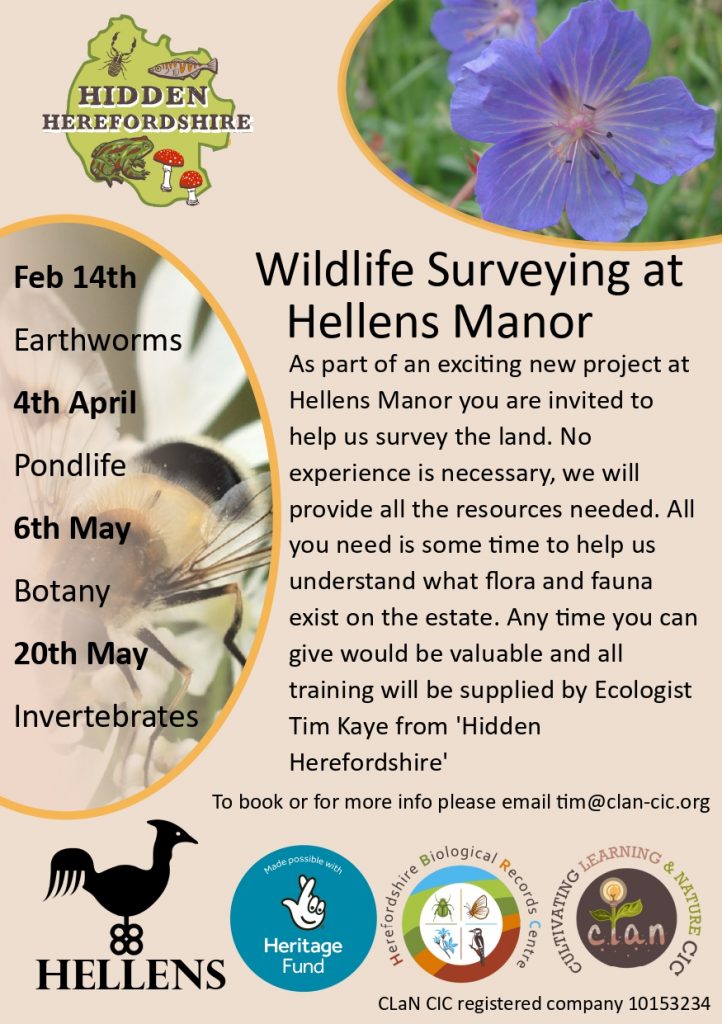 In partnership with Tim Kaye from Cultivating Learning and Nature CIC, we ran a series of survey days during the spring of 2022, working with volunteers to record what species are present at this early stage of the project.
In partnership with Tim Kaye from Cultivating Learning and Nature CIC, we ran a series of survey days during the spring of 2022, working with volunteers to record what species are present at this early stage of the project.
Beginning in February 2022, over 25 volunteers braved the drizzle and spent their Valentines day looking for earthworms! 
In stark contrast to the number and diversity of worms in the compost heaps, on the former arable fields there were shockingly few worms, sometimes not even 1 in a spade sample, demonstrating the vital need for this landscape regeneration.
Over the following months, volunteers also recorded pond life, invertebrates, dormice and plants.
We will repeat these surveys over the coming years and hope to see an increase in the number of species and biodiversity across the regeneration land.
If you are interested in helping us survey the land at Hellens please email us! info@hellensmanor.com
All finds will be documented as part of ‘Hidden Herefordshire’ with the Herefordshire Biological Records Centre.
More information on Hidden Herefordshire can be found HERE
